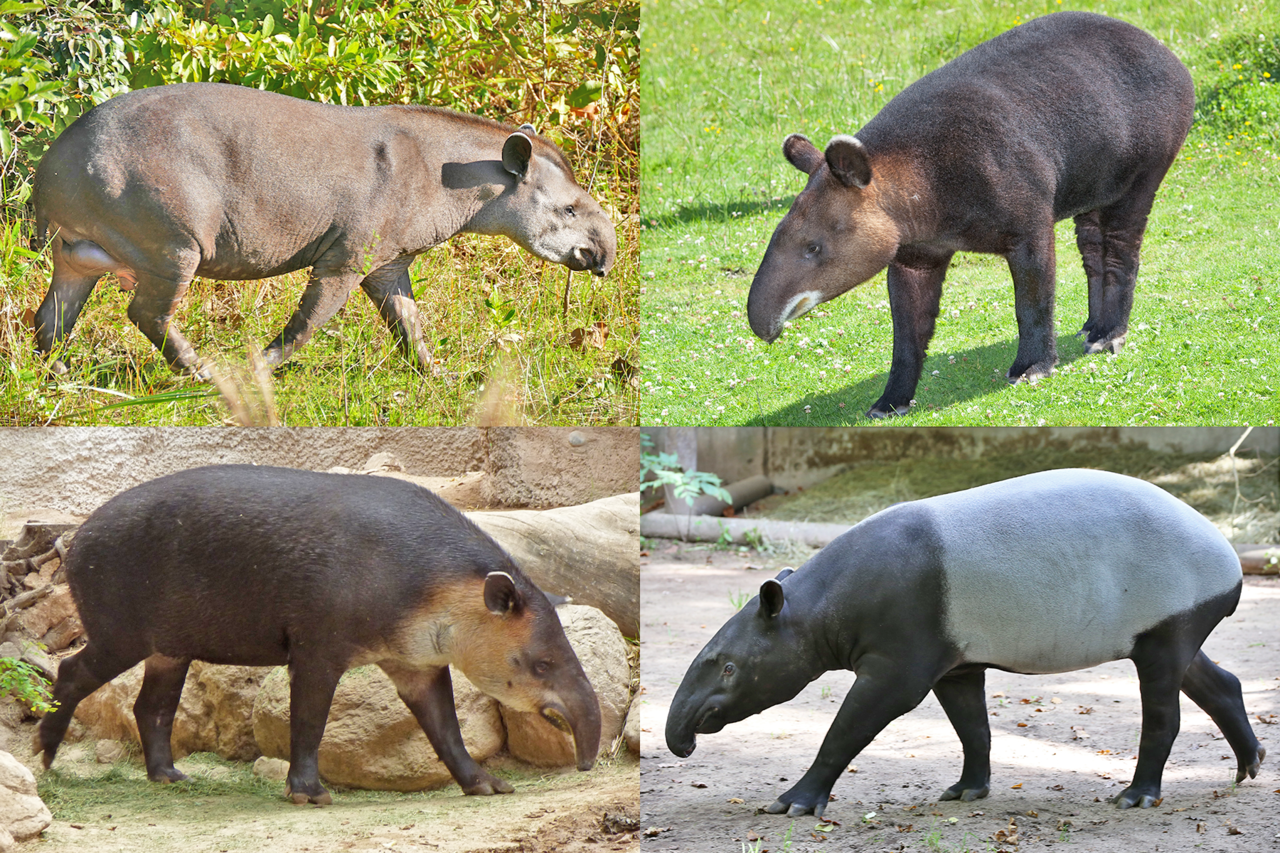- Species: There are four recognized species of tapirs: the Brazilian tapir, the Malayan tapir, the Baird’s tapir, and the mountain tapir.
- Ancient Animals: Tapirs have been around for a long time – fossils of their ancestors can be traced back to over 50 million years ago.
- Trunk-Like Nose: Tapirs have a distinctive, flexible, trunk-like nose and upper lip which they use to grab leaves and other vegetation.
- Size: Tapirs are large mammals. Depending on the species, they can weigh between 300 and 700 pounds and reach lengths of 4 to 8 feet.
- Habitat: Tapirs are found in various parts of the world, including Central and South America, and Southeast Asia.
- Swimmers: Tapirs are excellent swimmers and divers, often using water as a refuge from predators and to help them keep cool in hot climates.
- Nocturnal: Tapirs are mostly nocturnal and crepuscular, which means they are most active during the night and at twilight.
- Diet: Tapirs are herbivores. Their diet consists mainly of leaves, stems, fruits, and seeds.
- Lifespan: Tapirs can live for up to 30 years in the wild, and even longer in captivity.
- Endangered: All species of tapir are considered endangered or vulnerable due to hunting and habitat loss.
- Baby Tapirs: Baby tapirs are born with a coat of stripes and spots, which helps camouflage them in the wild. These markings fade after about six months.
- Distinctive Call: The sound a tapir makes is a high-pitched, whistle-like squeal.
- Running: Despite their bulk, tapirs can run quite quickly, easily navigating through dense forest and rugged terrain.
- Breeding: Female tapirs have a gestation period of approximately 13 months and usually give birth to a single calf.
- Role in the Ecosystem: Tapirs play a crucial role in their ecosystems as seed dispersers, helping to maintain biodiversity in their habitats.
Facebook Comments

































